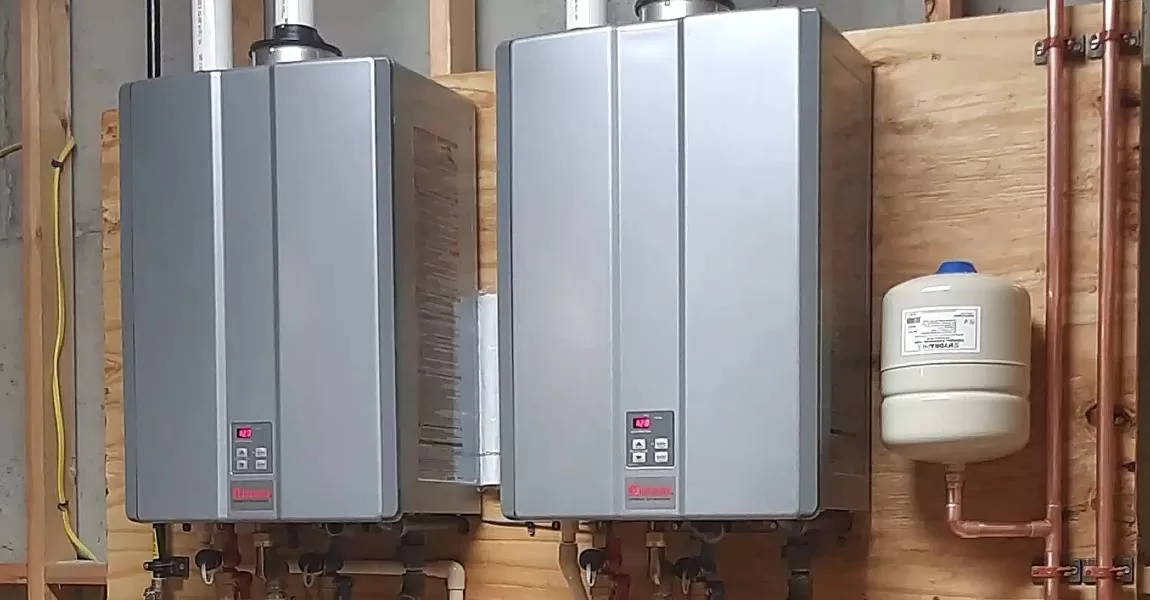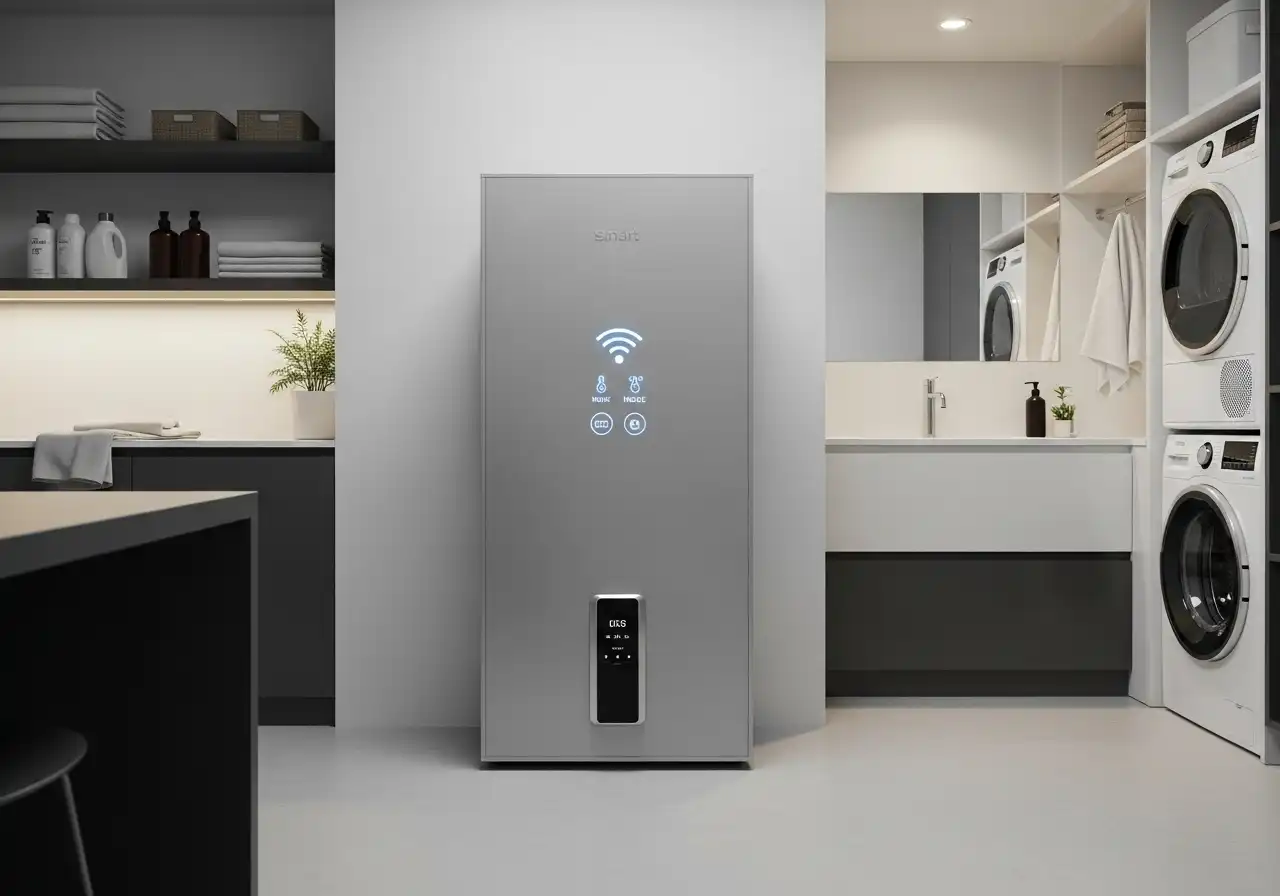Choosing the right size water heater for your home is one of the most important decisions you’ll make when it comes to ensuring hot water is always available for you and your family. The wrong size water heater can lead to running out of hot water too quickly, increased energy consumption, and higher utility bills. On the flip side, choosing a water heater that’s too large for your needs can waste energy and money, as the system will have to work harder than necessary to heat water.
In this blog, we’ll walk you through how to determine the right water heater size for your home and provide some tips to help you make the best decision for your needs.
1. Why Water Heater Size Matters
The size of your water heater affects both your comfort and your energy costs. A water heater that’s too small may not be able to meet your family’s hot water demand, leading to lukewarm showers and frustration. Conversely, a water heater that’s too large can waste energy, as it will take longer to heat the water and may use more fuel than necessary.
Choosing the correct size ensures you have a consistent supply of hot water when you need it, while also making sure your system runs efficiently, saving you money in the long run.
2. Factors to Consider When Sizing Your Water Heater
To select the right size water heater for your home, you’ll need to take into account the following factors:
1. Household Size
The number of people in your household plays a significant role in determining how much hot water is needed. A family of four will generally require more hot water than a single person or a couple. The more people in your household, the larger the capacity your water heater should have to meet the demand.
2. Peak Hour Demand
This refers to the times during the day when multiple people in your home will be using hot water simultaneously—such as in the morning when everyone is taking showers or in the evening when dishes need to be washed. Understanding your peak hour demand helps determine the necessary size to ensure your family isn’t left with a cold shower.
3. Usage Habits
Take note of your family’s hot water usage habits. For instance, do you have multiple bathrooms? Do you often run the dishwasher and laundry machine at the same time? These factors will affect the volume of hot water you need and should be factored into the sizing decision.
4. The Type of Water Heater
The type of water heater you choose—whether it’s a traditional tank, a tankless system, or a hybrid model—also affects sizing. While a traditional tank stores water, a tankless water heater heats water on demand. The flow rate of a tankless unit, usually measured in gallons per minute (GPM), will determine the capacity you need.
3. Choosing the Right Size for a Tank Water Heater
Traditional tank water heaters are the most common type used in residential homes. They store a set amount of hot water in a tank, which is then used as needed. When sizing a traditional tank water heater, you’ll want to make sure it can supply enough hot water during peak usage.
Tank Size Guidelines:
-
1-2 People: For a small household with 1-2 people, a 30-40 gallon tank should suffice.
-
3-4 People: A family of 3-4 people typically needs a 50-60 gallon tank.
-
5+ People: Larger families or households with more than 4 people will likely need a 70-80 gallon tank to meet their needs.
These recommendations are based on average water usage patterns, but factors like the number of bathrooms and appliances can adjust your needs.
4. Choosing the Right Size for a Tankless Water Heater
Tankless water heaters, also known as on-demand water heaters, heat water only when it’s needed. Because they don’t store hot water, sizing a tankless unit depends on the flow rate and temperature rise needed. To select the right size tankless water heater, you’ll need to calculate your household’s peak flow rate and the temperature increase required to bring your incoming cold water to your desired hot temperature.
Flow Rate Considerations:
Flow rate is typically measured in gallons per minute (GPM). The higher the GPM, the larger the tankless water heater should be. Here’s how to calculate it:
-
Determine GPM Requirements: Look at the flow rate of fixtures that will be used simultaneously. A shower might flow at 2-2.5 GPM, while a dishwasher or washing machine may use 1.5-2 GPM. For example, if you want to run two showers at once, that’s 4-5 GPM needed.
-
Temperature Rise: This refers to how much you need to increase the temperature of incoming cold water. Cold water typically enters the home at around 50°F, but if you want water heated to 120°F, you’ll need a 70°F temperature rise.
As a general rule, a tankless unit will need to provide about:
-
2.5 GPM for a small household or for light use.
-
4-5 GPM for a moderate household or larger use (multiple showers and appliances).
-
6+ GPM for larger homes with heavy usage.
5. Choosing the Right Size for a Hybrid Water Heater
Hybrid water heaters, also known as heat pump water heaters, combine the energy-efficient benefits of a heat pump with the convenience of a traditional water heater. These models are typically larger and more expensive upfront, but they offer significant savings over time.
Hybrid Size Considerations:
Hybrid water heaters generally have a larger tank capacity because they store hot water in a tank, but use a heat pump to heat the water more efficiently. For most homes, a 50-80 gallon hybrid model should suffice. However, if you live in a larger home or have a high demand for hot water, consider models with higher capacity.
6. Energy Efficiency and Size
When sizing your water heater, it’s also important to consider energy efficiency. Water heaters with higher energy efficiency ratings can reduce your monthly utility bills, even if they are a bit more expensive upfront.
Look for:
-
Energy Star-rated Models: These are the most energy-efficient options and often qualify for rebates or tax incentives.
-
Insulation: Well-insulated water heaters lose less heat, which means they operate more efficiently.
-
Recovery Rate: This refers to how quickly a water heater can replenish hot water after it’s been used. A higher recovery rate means you’ll be able to use hot water sooner.
7. Professional Consultation
While the guidelines above can help you get started, it’s always a good idea to consult with a professional plumber or water heater technician. They can help you assess your home’s needs, recommend the best size, and install your system correctly.
8. Conclusion: Size Matters, But Efficiency Matters Too
Choosing the right size water heater is essential for ensuring your home has enough hot water and that your system runs efficiently. By considering household size, peak demand, water usage habits, and energy efficiency, you can make an informed decision that will keep your home comfortable while saving you money in the long run.
At TenChoicez.com, we help guide you through the process of selecting the right water heater for your needs. Whether you’re considering a tank, tankless, or hybrid model, we’ve got the tools and resources to help you find the perfect system for your home. Let us help you make the right choice—one that will provide reliable, energy-efficient hot water for years to come.


